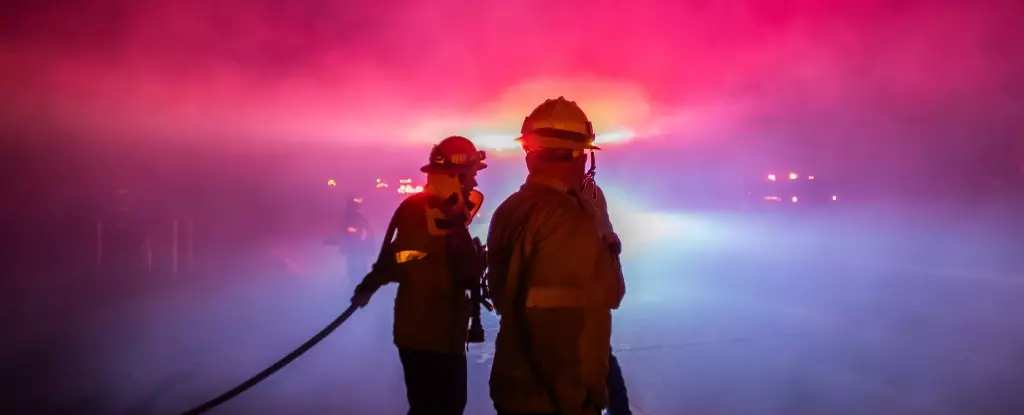The severity of wildfires in California has reached alarming levels, with the high-profile Franklin fire in Malibu laying bare the urgent need for community awareness and preparedness. As flames ravaged through this opulent enclave on a Wednesday, thousands, including prominent Hollywood celebrities like Dick Van Dyke, were compelled to abandon their homes and seek safety. The blaze began late Monday, converting the traditionally serene landscape into a chaotic scene of destruction, as the wind-driven flames scorched a staggering 4,000 acres (1,600 hectares). Reports confirmed the loss of at least seven properties in an area famed for its luxury estates, highlighting the often-overlooked vulnerability of even the most affluent neighborhoods.
An army of around 1,500 firefighters engaged in a relentless struggle against the flames, deploying aerial resources and ground crews to establish containment lines. Fire Chief Anthony Marrone relayed the ongoing battle against the fire’s eastern and northern flanks, but he underscored the looming threat that the western front posed. His contingency plans reflect a broader strategy where close monitoring of weather conditions—especially considerations of strong winds and low humidity—are pivotal to formulating effective firefighting responses. The issuance of a Red Flag Warning was an acknowledgment of these hazardous conditions and manifested the urgency of public safety messaging.
In today’s digital age, communication plays a crucial role in crisis management. However, the wildfire left hundreds in Malibu without power, impairing their ability to receive real-time updates and directives regarding evacuation orders. This scenario raises questions about emergency preparedness and the need for reliable infrastructure that can withstand such devastating events. Historically, California has grappled with wildfires, and the region’s infrastructure struggles under the strain. Indeed, scientists attribute the growing severity of fires, exacerbated by climate change and mismanagement of land, to a cycle where fires burn faster and hotter than ever before.
The Franklin fire serves not only as an immediate threat to life and property but also as a reminder of the broader implications of climate change and land management. While many residents fled, the emotional toll of leaving belongings and beloved pets behind amplified the anxiety of an already harrowing situation. For some, the loss of property is not solely about material possessions; it represents a loss of community and memories. With evacuations affecting around 20,000 residents, the aftermath of this natural disaster calls for effective contingency planning and risk assessment to mitigate future occurrences.
In light of recent events, a critical assessment of fire management and public safety policies is crucial. The zero-tolerance approach to wildfires, once considered a standard preventive measure, is now acknowledged as contributing to fuel build-up in California’s wilderness. As climate conditions become increasingly erratic, strategies need revising, focusing on sustainable management and community engagement. Understanding the limitations of historical practices is vital in moving towards effective wildfire risk reduction strategies that prioritize both human life and ecological balance.
The devastation of wildfires, particularly in areas like Malibu, underscores the need for collective action and awareness among residents, officials, and firefighters alike. While the battle against the Franklin fire continues, it serves as a stark reminder of the ever-increasing threat posed by climate change and misaligned land management practices. To forge a safer future, we must confront the uncomfortable truths about our relationship with nature and implement strategies that promote resilience in our communities, ensuring that the intimate connection between people and their environment is respected and safeguarded. In doing so, Malibu and similar communities may emerge not just as survivors, but as leaders in the fight against the increasingly frequent and severe wildfires of our time.


Leave a Reply